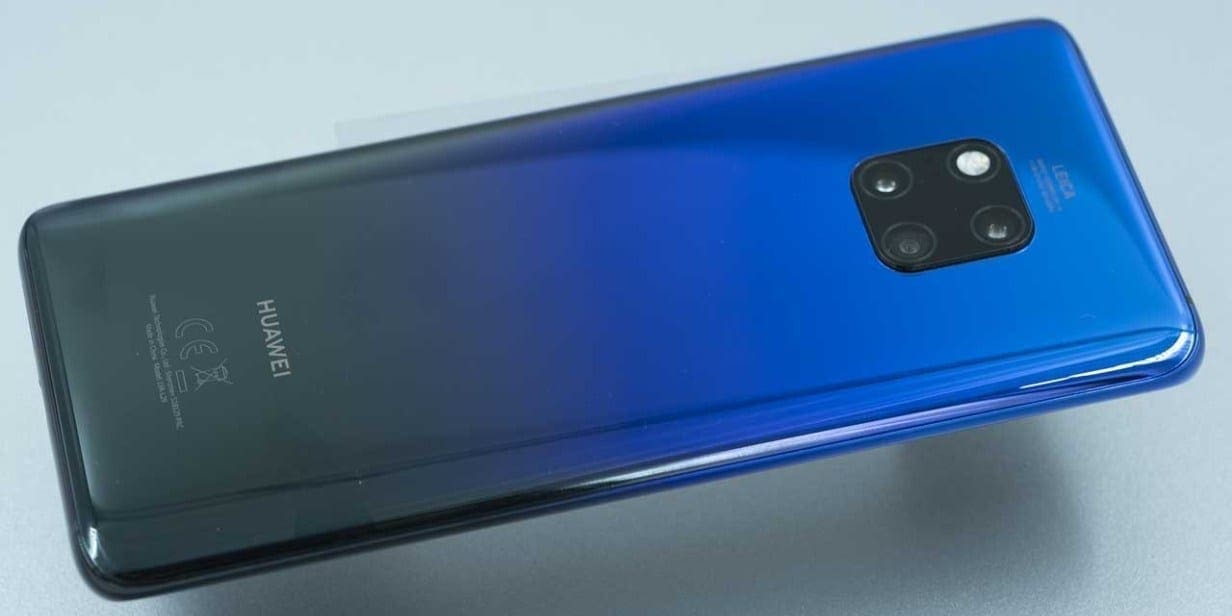The Mate 20 Pro is Huawei’s flagship smartphone and it has an excellent camera. In fact, it joined the Huawei P20 Pro at the top of DXOMark’s smartphone camera ranking.
Although the P30 Pro has some similar camera technology, there are a couple of significant differences that mean it could outperform the camera in the Mate 20 Pro. Let’s take a look at the main differences.

Camera Unit
The Huawei Mate 20 Pro has a Leica Vario-Summilux-H1.8-2.4/16-80 ASPH three-camera unit. That means it is made up of three cameras and has a focal length range equivalent to a 16-80mm lens.
Meanwhile, the P30 Pro has a Vario-Summilux-H1.6-3.4/16-125 ASPH quad-camera system. As a result, its four-camera unit has a focal length range equivalent to 16-125mm.
This is means that while the two phones’ camera systems have the same wide-angle capability, the P30 Pro has a longer telephoto lens which allows distant objects to be framed more tightly than by the Mate 20 Pro. That makes the P30 Pro a bit more versatile and potentially a better choice for everyday photography.
The P30 Pro achieves its impressive telephoto focal length by using a periscope design for its 8MP 5x zoom lens. This means the lens (and the light) bends through 90-degrees to allow it to fit inside the phone’s slim body.
A longer focal length allows you to stand further away from your subject. As well as producing more flattering images, portrait subjects tend to feel a bit more comfortable when you shoot without the camera shoved in their face.
Sensor
In a crucial and groundbreaking difference from the Mate 20 Pro, the P30 Pro’s 40Mp sensor has a new design. Instead of the standard RGGB (red, green, green, blue) Bayer pattern colour filter array over the sensor, Huawei has used an RYYB (red, yellow, yellow, blue) array.
Huawei has done this because yellow has a wider spectrum which means the yellow filters transmit more light than green filters. Consequently, the P30 Pro’s camera is more sensitive to light and can shoot in darker conditions than the Mate 20 Pro.
In fact, Huawei has given the P30 Pro a maximum sensitivity of ISO 409,600. That’s a value that’s usually only found on top-flight DSLR and mirrorless cameras.
Depth Measurement
As mentioned earlier, the P30 Pro has a quad-camera system. This comprises a 40MP f/1.6 camera, a 20MP 16mm (equivalent) ultra wide f/2.2 camera, an 8MP 5x zoom periscope f/3.4 OIS lens and a Huawei TOF (Time of Flight) camera.
That fourth (TOF) camera unit is used for gathering data about how light bounces off objects in the scene so the P30 Pro can understand the distances between them. It enables the P30 Pro’s camera to replicate how sharpness falls off from the focus point with a large sensor camera. As a result, images should look more natural in Aperture mode than they do from the Mate 20 Pro.
Artificial Intelligence
Both cameras make use of artificial intelligence (AI). However, the P30 Pro benefits from Huawei’s extra development time. As such, the P30 Pro has AI HDR+ built-in. This assesses the brightness distribution across an image and applies bespoke adjustments to different areas to create a more balanced exposure. That makes it easier to get good images of tricky subjects like backlit portraits.
Of course, there are times when you want to turn off the AI so you have greater control over the final image. Huawei has made this a bit quicker and easier in the P30 Pro as the AI control is located at the top of the native camera app screen, with the Mate 20 Pro, you have to dip into the menu.


Camera Location
Huawei used a smart symmetrical design for the Mate 20 Pro and the three elements of the camera unit are arranged in a square with the flash. This is around the midline of the camera towards one end.
The lenses in the P30 Pro’s camera, however, are close to one edge of the smartphone. While this can mean your fingers are more likely to slip in front of a lens when you first start using the phone, it can make getting close to some subjects easier. That’s helpful as, like the Mate 20 Pro, the P30 Pro has a 2.5cm macro shooting option.
Video Quality
This video compares the 4K output from the Huawei P30 Pro with that from the Huawei Mate 20 Pro.
As you can see, some colours from the Huawei P30 Pro are quite different from those from the Mate 20 Pro, they’re noticeably warmer. This works well with some scenes, making them more attractive, but reds and browns can look a bit too strong. In some cases, there’s a magenta cast.
The P30 Pro also produces slightly brighter footage and there’s a little more detail in some areas. However, neither phone delivers especially impressive results from the moving train.



